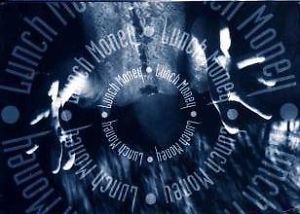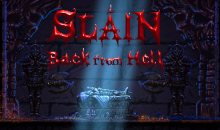Review: Lunch Money
Lunch Money taps into that inner Catholic schoolgirl revenge fantasy inside all of us…
My progression with cards and card games was mostly an economic one. I started out collecting baseball cards, which was fun when I also went to baseball games. In high school I stopped going to games and traded by baseball cards in for Magic: the Gathering cards. My reasoning was Magic cards were something I could use, as well as collect. During the years I played Magic (from Revised to Visions, which will date me for those of you that follow the expansions) I must have dropped a year’s worth of future college tuition. I moved from Magic to single-player card games in an effort to stop spending my weekly lunch money allowance chasing Moxes or Chaos Orbs.
Lunch Money (no irony intended) was one of three single-deck card games that marked my transition out of Magic. The other two were The Great Dalmuti and Guillotine. (Way Too Late reviews of these other games forthcoming…one day.) I recently acquired a new Lunch Money deck and tried it out to see if memory held up and the game was still enjoyable.
I say acquired. Lunch Money is out of print, and I found a copy at the back of a shelf in a Chicago games store, after scouring game shops in several cities across the U.S. and Canada. There is an expansion (Sticks and Stones) as well as a companion expansion/standalone game (Beer Money). I’d seen those two products around, but the original game was a bit tough to track down. Atlas Games has moved on from Lunch Money it seems, and their website is more taken up with newer products Once Upon a Time and Gloom. But after successfully buying a copy, I couldn’t wait to play.
The theme of Lunch Money is simple: the players are Catholic schoolgirls, beating each other up on the playground for their lunch money. Each player starts out with 15 health, and uses a variety of punches, kicks, slaps, taunts, and weapons to render all other opponents unconscious. The cards themselves are color-coded according to card type (Basic, Defense, Weapons, and Special) and feature blurry, grungy, gothic-style pictures of schoolgirls, accompanied by some flavor text.
This game is very stylized, which is its strongest selling point. The artwork is disturbing (even now, almost 20 years after it was first released) and the instructions encourage players to be as descriptive as possible when describing the horrible things the schoolgirls do to one another. (This form of storytelling was later employed to an even greater extent in Gloom). Each player always has five cards in their hands, so games are quick. It’s possible to play several games in rapid succession in thirty minutes or less. While labeled as being for two to four players, the game works best with three. At four players it can be hard to keep track of who to damage, while some of the game mechanics are a bit broken at the two-player level.

Remember these rules, there will be a test later: Big Combo must be blocked by 2 Defense cards, or play only 1 Defense card and take half damage. Got that?
The broken game mechanics were what disappointed me the most about my re-entry into the Lunch Money world. As I’ve grown older, I’ve developed a fondness for games that can be played out of the box with little to no learning curve. While Lunch Money’s basic game mechanics have such a low curve, the curve gets higher for certain cards. The various Defense cards (Dodge, Block, Freedom) only work for certain cards, and keeping track of which cards can be Dodged but not Blocked is tiring. While the instruction sheet is only two pages long, Lunch Money is the kind of game where players play with the rule book easily accessible. (“Let’s see. How do you play Choke again?”) It’s a bit of a quibble, but Lunch Money is not a game I’d introduce to newbie players for its steepish learning curve. However, it’s always nice to revisit some part of pop culture from your past and discover how well it holds up, whether it’s a movie (Who Framed Roger Rabbit?) TV show (Deep Space Nine) or card game. If you like single-deck card games, keep your eye out for Lunch Money and if you see it pick it up.
tl;drs
Blank is a blanker version of blank: Lunch Money is like any single-player elimination game, only more gothic and Catholic schoolgirl-y.
Screen credits over/under: Under. Charles Weidman is the sole creator. Weidman is also a director.
Recommended if you like: Real-life PvP, schoolgirl cosplay.
Better than I expected: The game art is still disturbing, almost 20 years after its release.
Worse than I hoped:. Gameplay isn’t as intuitive as I’ve grown to appreciate.
Lunch Money would work better as a(n): Simpler version of itself. Perhaps played with house rules that remove cards like Headlock and Choke from the deck.
Verdict: Worth buying…if you can find a copy.
All images from Atlas Games. In the interest of ethics in games journalism, we’d like to state that the author did not receive any consideration from the publisher for writing this article.







